The roof on your home is the first line of defense against Mother Nature. Knowing how and when to inspect your roof is vital. According to the National Roofing Contractors Association, homeowners should inspect their home twice a year, in the spring and fall. A good habit to set is to inspect it when the time changes (if applicable), along with the batteries in your fire alarms. Also, always check the roof after a bad storm.
So how do you inspect your roof? The first place to look is at the ceilings and walls inside your home plus the porch ceilings. Are there any water stains or streaks? Do you hear dripping water? Next, check your attic. Look for daylight coming through your roof. Also look for water stains or streaks on the attic framing and roof plywood. Do you see a sagging spot in the roof? Look at the top of the insulation, is it wet or discolored? These are all signs of a leak.
Next, look at the exterior of your roof. Climbing and walking on a roof is very dangerous and should only be done by licensed and insured professionals. You may be able to see a lot from the ground. If not, contact Roof Top Services for a roof inspection.
General things to look for when inspecting your shingle roof
- Debris on the roof
- Clogged gutter/downspouts or debris in the gutter.
- Are there loose granules in the gutter or at the bottom of a downspout?
- Missing, cracked or torn shingles?
- Bald spots on the shingles due to granule loss.
- Shingles that are curled or cupped on the edges.
- Green moss on the shingle, especially on the shady side of the roof.
- Hail damage can tear or puncture shingles.
- Holes drilled on purpose like for satellite dishes. Look for missing nails, failed caulk or roof cement.
- A valley is where two or more roof lines meet and allows water and snow to flow to the gutters. The valley is very important part of the roof and any damage or missing shingles needs immediate attention.
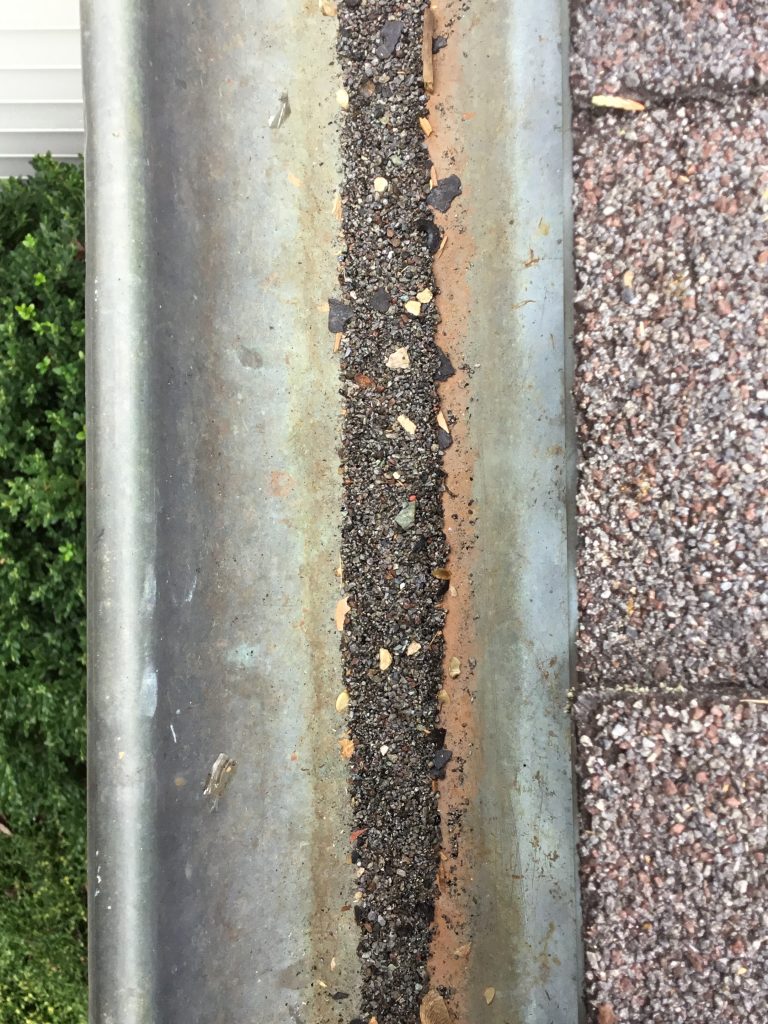
Asphalt Granules in your Gutter 
Water stain on Plywood in Attic 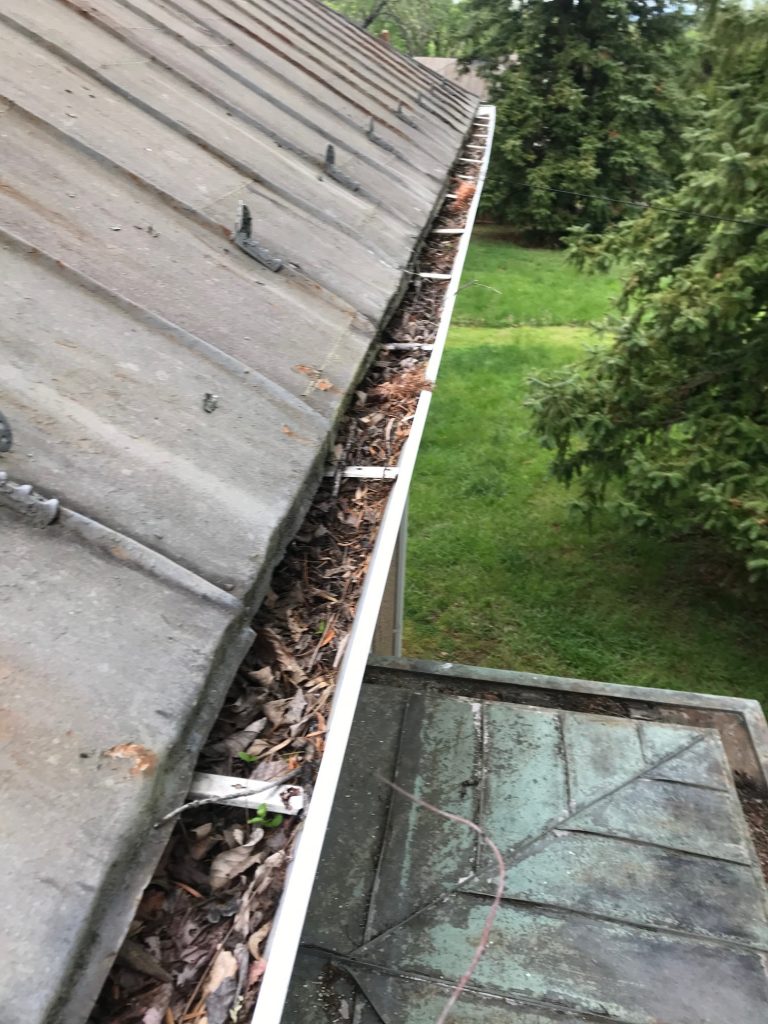
Clogged downspout or debris in gutters 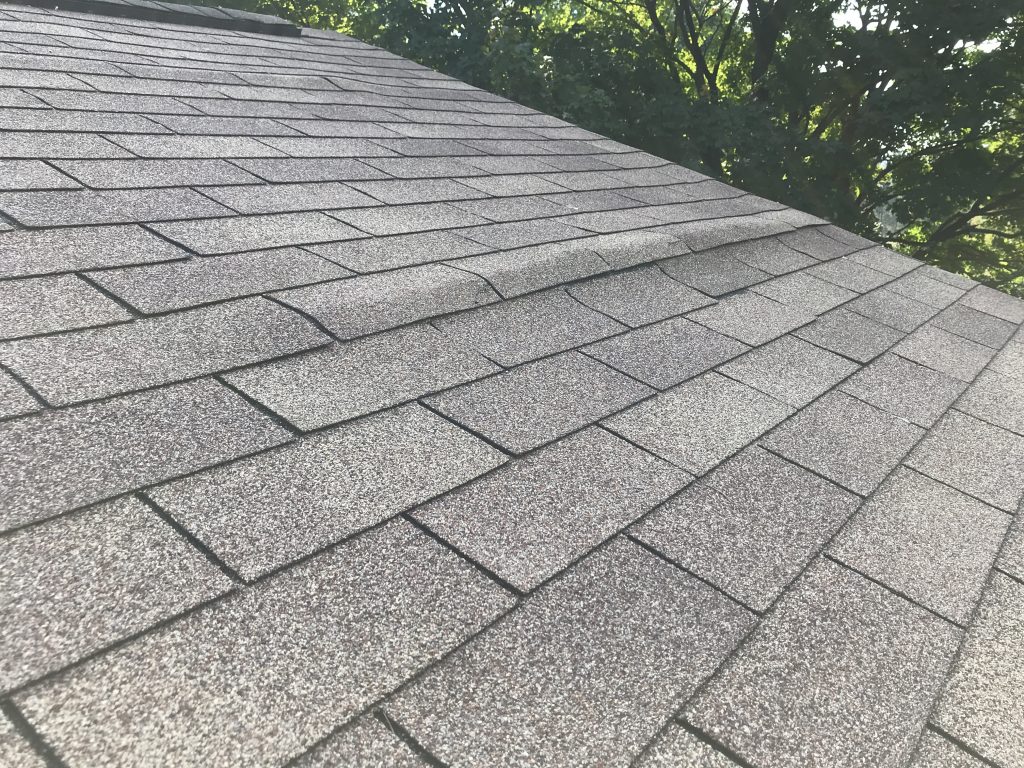
Sag in Roof 
Moss on Roof 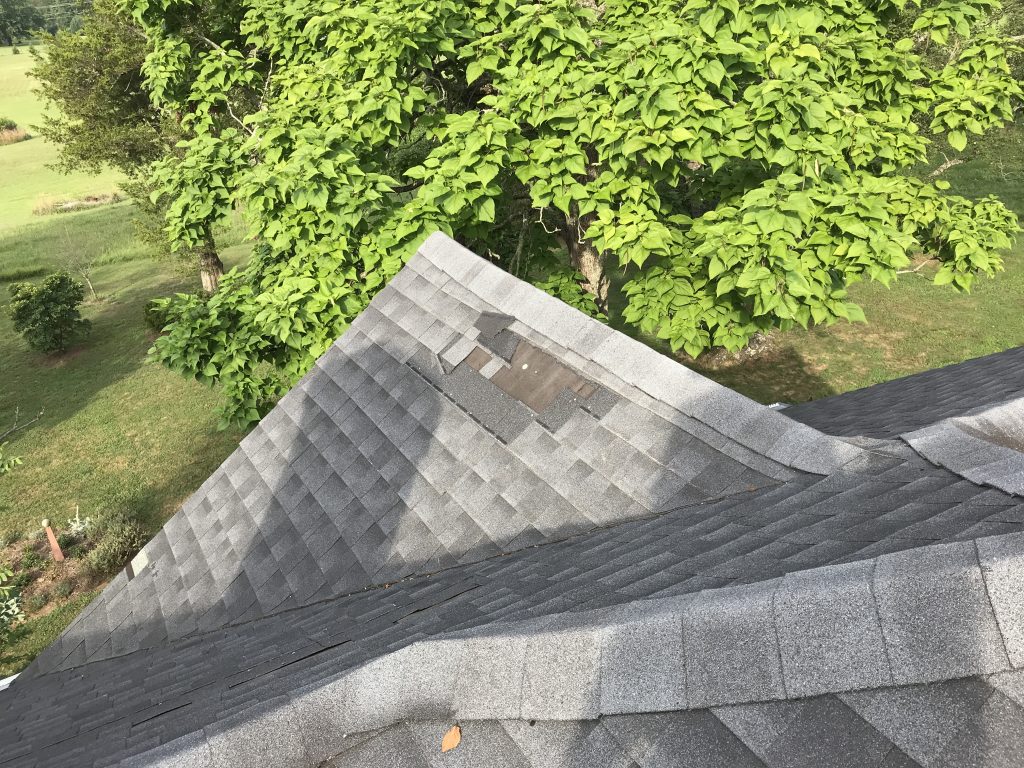
Missing Asphalt Shingles 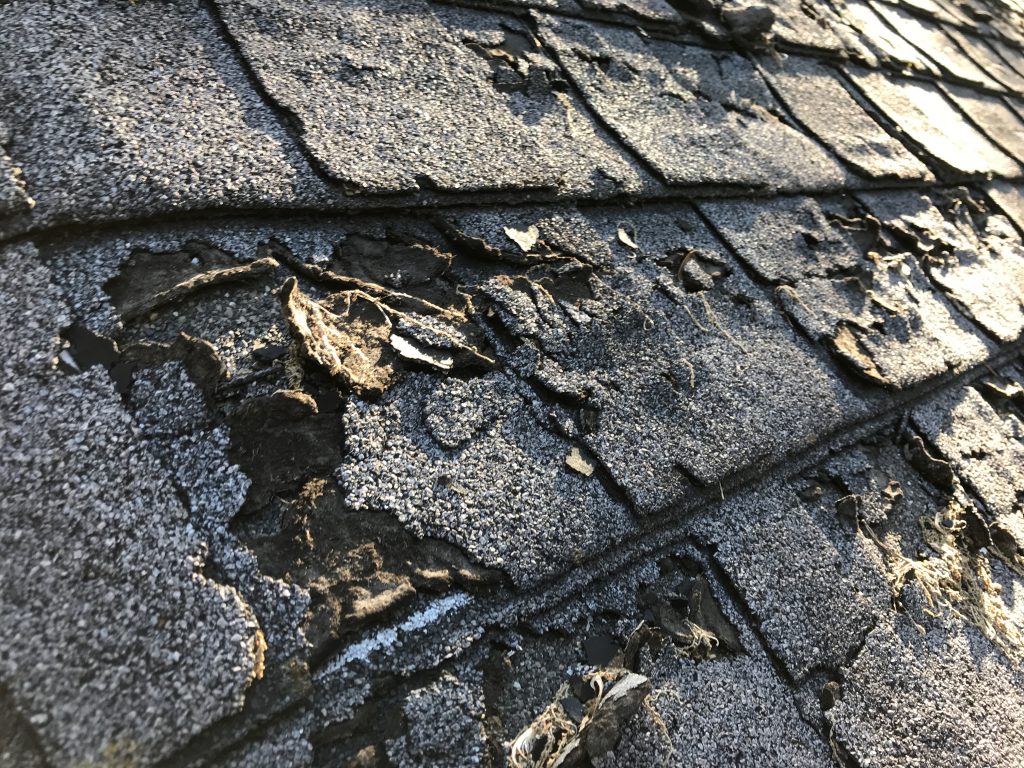
Cupped Shingles or Deteriorated Asphalt Shingles
Flashing can be one of the most common sources of roof leakage
Flashing is what seals penetrations when the shingles met another surface, like when another wall intersects the roof, or chimney, skylight, plumbing vent pipes or attic vents come through the roof. In older homes, sometimes there is no flashing and only tar, roof cement or caulk. Let us look at these in more depth below.
- Step flashing is used along a wall’s siding where it intersects the roof. The flashing goes under the walls’ siding and is bent in an L shape. The portion that goes under the shingle allows the water to flow over the shingle below it. This is what stops the water from entering your home through this connection. Any rust, missing step flashing or exposed nails are a concern.
- Chimneys are often a main source of leaks. The flashing for chimneys is complicated, it has step flashing (definition above) and over that it has counter flashing that is typically set in the brick grout line. If it is a wooden chimney, it’s goes under the siding. Look for missing flashing or nails, rusted metal or tar. Also is there debris collecting behind the chimney? A wide chimney over 30 inches requires a cricket or saddle to direct the water to one or both side of the chimney. This can be added during a roof replacement.
- Skylights also have step flashing (definition above) but also have a seal around the actual glass. Each of these can be problem areas. Look for missing flashing, rust, exposed nails or damaged seal around the glass.
- The plumbing vent pipes allow your plumbing to work properly. The flashing is called a vent boot, and can be metal, plastic, or a combination. Look for cracks, broken seams, rust or missing nails. Pay special attention to the rubber piece that tightly surrounds the pipe. Any torn, damaged or rusted areas will allow water to infiltrate.
- Attic vents allow air to escape from your attic. They can be metal or plastic. Look for cracks, rust, or exposed nails.
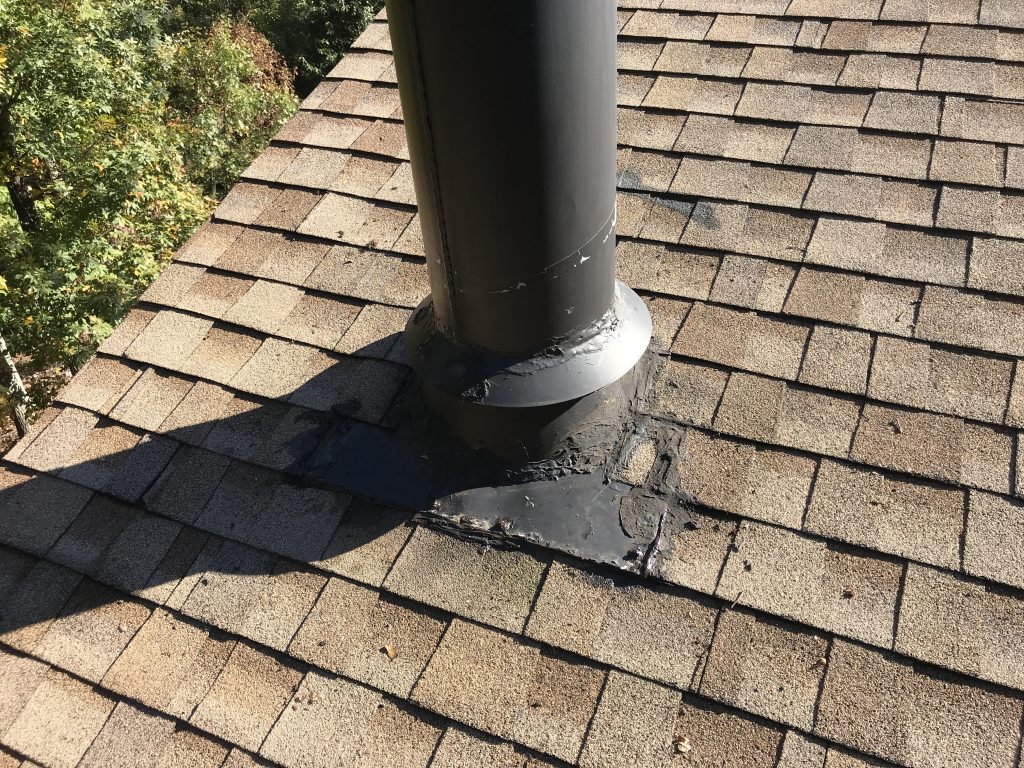
Vent Pipe With Tar That Needs New Flashing 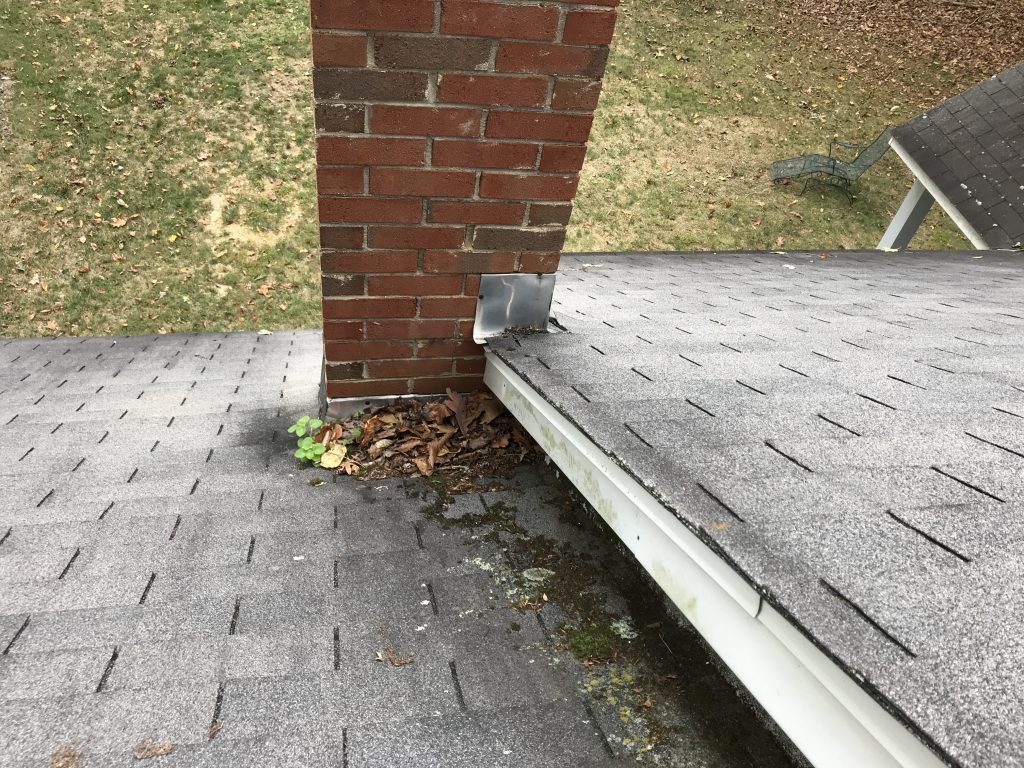
Chimney Cricket Needed 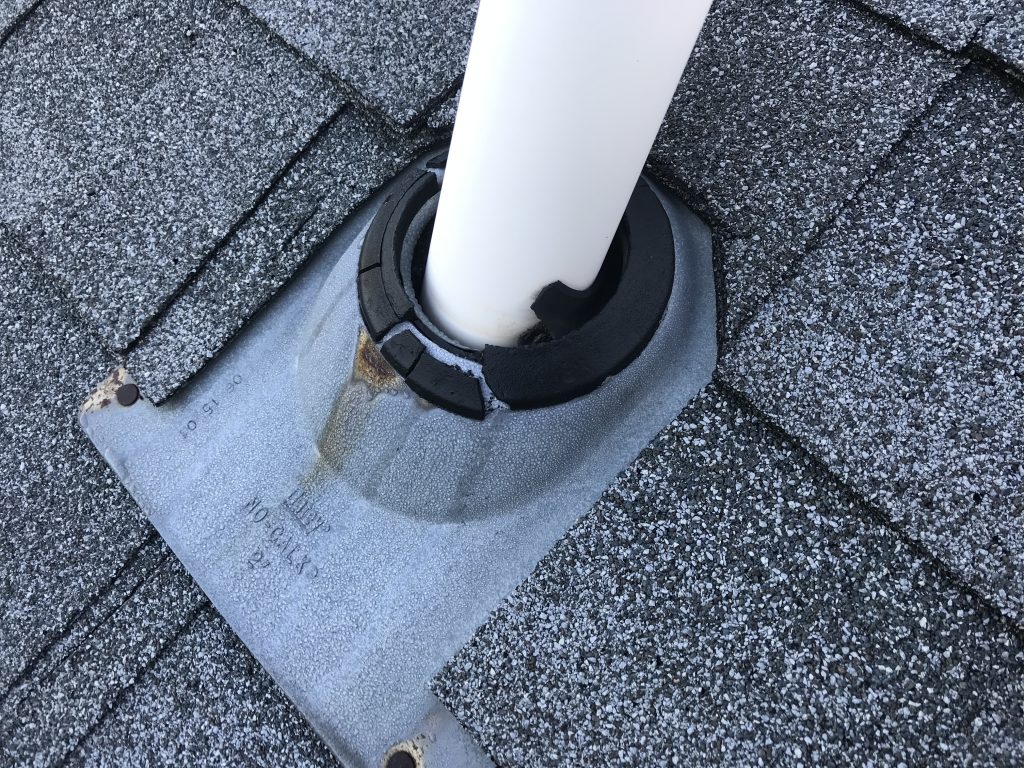
Bad Plumbing Vent 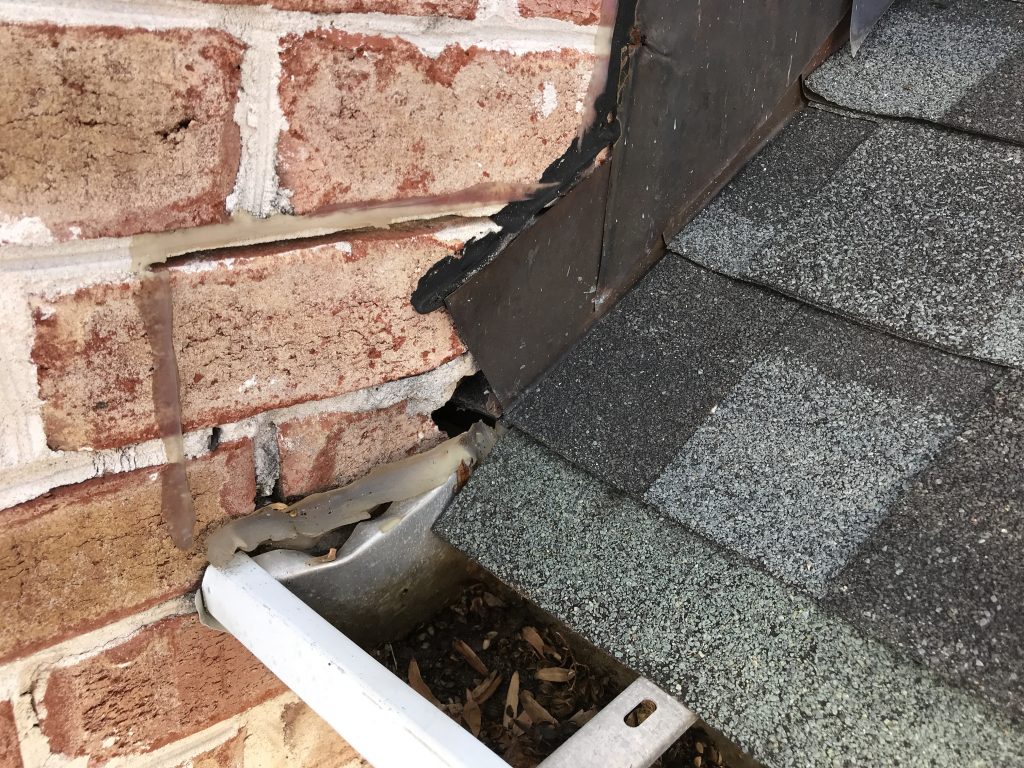
Bad Flashing at Chimney 
Hole in Roof Valley Flashing
The age of your asphalt shingles is a factor to take into consideration
Another consideration is the age of your roof. Most shingles only last 20-25 years depending on quality and manufacturer. If you live in a neighborhood where the homes are about the same age, take not if your neighbors are having their roofs replaced.
A problem with one or more of these may not mean you need a new roof if the shingles are in good shape. Contact Roof Top Services for repairs!









